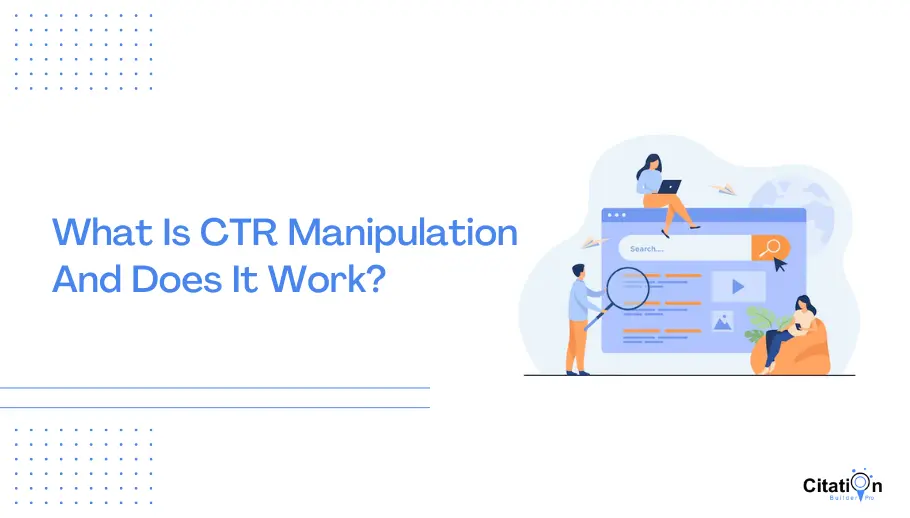Enhance Individual Experience With Efficient CTR Control
In today's digital landscape, the relevance of click-through price (CTR) as an essential performance indication can not be overemphasized, especially in the context of customer experience improvement. The real efficacy of these approaches exists in recognizing user actions and choices, increasing important questions about the most effective techniques.
Understanding Click-Through Price
What aspects add to a reliable Click-Through Rate (CTR)? CTR is an essential metric that determines the efficiency of on the internet advertising and content interaction. Several crucial elements influence this rate. The importance of the material to the target audience plays a considerable duty; advertisements or web links that line up very closely with individual rate of interests are more most likely to be clicked.
2nd, the style and placement of the call-to-action (CTA) can dramatically impact CTR. A well-contrasted, captivating button placed strategically within the web content can drive higher interaction. Additionally, engaging headings and summaries that stimulate inquisitiveness or seriousness are vital in persuading users to click.
Third, using visuals, such as videos or photos, can improve the appeal of the web content, making it extra attractive to users - LinkDaddy CTR Manipulation. The filling speed of the website also matters-- slower sites can hinder clicks
Value of Customer Involvement

Involved users are more probable to convert, whether that implies purchasing, authorizing up for a newsletter, or taking an additional desired action. Furthermore, user interaction can directly influence search engine positions, as systems like Google focus on web content that resonates with target markets. This, consequently, can lead to boosted visibility and organic web traffic.
In addition, recognizing customer engagement metrics permits marketers to customize their web content strategies better. By analyzing which pieces of content create the most interaction, businesses can improve their method and focus on what truly resonates with their audience. Eventually, promoting individual involvement not only improves instant marketing outcomes but likewise prepares for long-lasting relationships with consumers, making it an essential aspect of any kind of successful electronic approach.
Strategies for Effective CTR Adjustment
To boost click-through prices (CTR) properly, marketers must use a variety of critical strategies tailored to their target audience. Crafting engaging headings is vital; they ought to be clear, concise, and evoke interest. Making use of action-oriented language can substantially enhance engagement.
Secondly, including aesthetically appealing elements such as top quality pictures or video clips can attract attention and encourage clicks. It's necessary that these visuals relate to the web content to keep user you could try here rate of interest. In addition, A/B testing different layouts can aid determine which components resonate ideal with the audience.

Analyzing User Habits
Recognizing customer you can try here actions is vital for optimizing click-through prices (CTR) and boosting total advertising and marketing techniques. By obtaining insights into how individuals engage with material, companies can customize their strategies to meet specific requirements and preferences. Evaluating individual habits involves taking a look at numerous metrics, such as click patterns, time invested in pages, and navigating courses, to determine fads and areas for enhancement.
Making use of tools like heatmaps and customer session recordings can offer a visual depiction of customer communications, highlighting which elements engage individuals and which might cause drop-offs - CTR Manipulation. Additionally, segmenting individuals based upon demographics, behaviors, and passions permits for even more individualized advertising efforts, raising the likelihood of higher CTRs
Aspects such as emotional triggers, significance of the content, and regarded worth can substantially affect customer engagement. Inevitably, a thorough analysis of individual habits offers as the structure for establishing reliable CTR control approaches that enhance individual experience and drive conversion prices.
Measuring Success and Adjustments
Examining user behavior lays the groundwork for determining the efficiency of read the full info here CTR manipulation techniques. By utilizing key efficiency indicators (KPIs) such as click-through prices, conversion prices, and individual engagement metrics, organizations can track the success of their control efforts. Consistently checking these KPIs offers insight into just how users communicate with material and can highlight areas requiring renovation.
To assess the impact of different strategies, A/B screening is crucial. This approach permits marketing professionals to contrast variants of web content and determine which aspects resonate most with the target market. By systematically checking headings, pictures, and phones call to activity, companies can refine their technique based on empirical information.
In addition, evaluating qualitative responses from users can complement quantitative metrics. Studies and customer interviews can uncover individual choices and motivations, causing much more customized CTR methods.

Conclusion
Effective control of click-through prices (CTR) significantly boosts individual experience. By implementing methods such as compelling headings, top notch visuals, and critical call-to-action placements, marketing professionals can cultivate higher individual involvement.
Recognizing user habits is important for optimizing click-through prices (CTR) and boosting total advertising and marketing techniques. Inevitably, a comprehensive evaluation of individual actions serves as the foundation for establishing reliable CTR adjustment techniques that boost individual experience and drive conversion rates.
Analyzing customer actions lays the groundwork for gauging the effectiveness of CTR adjustment strategies. Eventually, measuring success and making essential changes is a recurring process that makes sure user experience is regularly boosted through reliable CTR control.
Reliable manipulation of click-through rates (CTR) dramatically improves user experience.